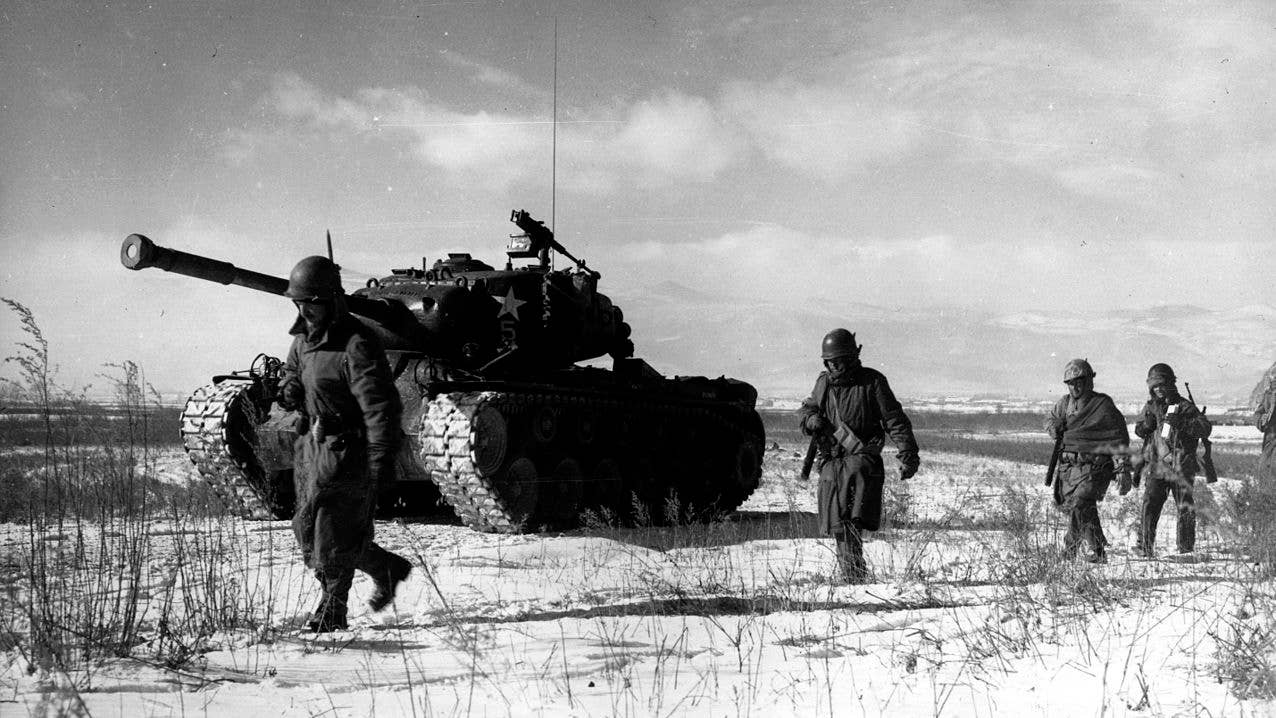The 5 worst and most unforgiving battlefields in military history

A column of the US 1st Marine Division moves through Chinese lines during its breakout from the Chosin Reservoir with a M46 Patton Medium Tank. (Photo by Corporal Peter McDonald, USMC)
SUMMARY
If you ask any military commander, they will tell you that the condition of the battlefields is as crucial to winning a battle as the number of men or amount of supplies an army carries with it. Unfortunately, commanders don’t always get to pick the places their army must fight over. As with any careful plan, the enemy gets a say in its success.
Men have fought in combat under every possible conditions: rain, snow, sleet, and gloom of night. One side will always prevail, but the conditions listed under the five worst would give any casual reader pause to wonder what the brass was thinking.
Here are the 5 worst and most unforgiving battlefields in military history
1. Passchendaele, World War I
The area around the Passchendaele battlefield was originally reclaimed salty marshland. When the artillery shells and trench warfare of World War I’s western front rolled into the area, the area’s delicate ecosystem soon devolved into a muddy, swampy hellscape.
Passchendaele became a sea of mud into which many troops often drowned. Even if one fell into the mud near comrades, it was next to impossible for them to help their friend. At Passchendaele, they would sometimes shoot men who fell into the mud to save them from a slow, choking death.
2. Chosin Reservoir, Korean War
Imagine fighting an enemy who outnumbers your side by as many as ten-to-one, while having to do it in waist-deep snow, freezing temperatures and against an enemy with nothing to lose. That’s the kind of battle the U.S. Marines were fighting at the Chosin Reservoir.
With the Siberian winter in full effect, ten entire divisions of Chinese troops surprised UN forces in North Korea in 1950. With temperatures as low as -17 degrees Fahrenheit, U.S. Marines fought their way out of being surrounded. The ground was too frozen to dig foxholes, so Marines used the frozen bodies of their enemies as cover from communist bullets.
3. Bougainville, World War II
As the Allies fought to retake the Solomon Islands from the Japanese during World War II, one of the biggest obstacles for them was the reconquest of New Guinea. The effort was so massive it required two phases over nearly two years to complete. American forces bolstered the defenses of the island for months before the Australians broke out of the perimeter.
Once they did, they entered a dense battlefield of knee-deep mud, dark, overgrown tropical brush and a dense canopy that left them without aerial support. The result was close-quarters fighting against an enemy that would not surrender. As the dry season turned rainy, battlefield conditions only worsened until the Japanese surrender in August 1945.
4. Rzhev, World War II
No list of history’s worst battlefield conditions would be complete without an entry from World War II’s eastern front, where the Nazis and the Soviet Union battled it out in what might be military history’s greatest slugfest. Few places are more symbolic of this area of fighting than the “Rzhev Meat Grinder.”
Rzhev saw 3.6 million Soviet troops meet more than 1.6 million Germans on the field of battle and it showed. Just advancing on the enemy’s position required moving through acres of dead bodies, piled on in three layers. Some of the bodies were floating in waist-deep pools from fresh rains.
5. Dien Bien Phu, French-Indochina War
As if the dense jungle canopy and torrential rains of Vietnam weren’t enough, the French in Indochina placed an all-in bet on a reinforced position at the bottom of a valley. It wasn’t just raining sheets of water, it was also raining artillery shells and mortars. For the French, that was the beginning. Conditions inside the fortress were not only soaked by rain, they were filled with thousands of corpses of dead French troops who could not be moved.
Outside, the communist Viet Minh rebels fared better, but that’s because they were about to score their biggest victory over their occupiers. The Viet Minh were able to bring their artillery to bear on the French fort, but only because they hefted their guns to the tops of the surrounding ridges, hauling them up through an incessant wall of mud and rain.
SHARE
